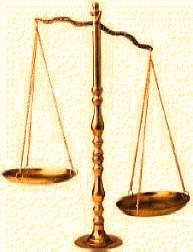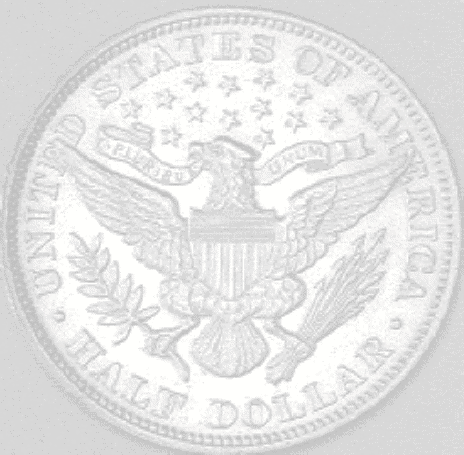
|
|
||
|
|
|
|
|
|
||

-31-
FOR BETTER OR WORSE:
The Panic of 1895
In January 1894,
the gold reserve fell to 65,000,000 "dollars, and to 55,000,000
"dollars" by July (White, 210). In January 1895, the reserve registered
44,000,000 "dollars" and panic gripped the nation. For the first time in
the history of the nation there was a "run" on the Treasury.
"Greenbacks" and Treasury notes were being redeemed at the rate of
3,000,000 "dollars" each day (White, 211). The Treasury was within 5
days of bankruptcy (White, 228). Mr. White declares the public was in
the frame of mind to redeem every "Greenback" and Treasury note
outstanding (White, 211).
Once again the American economy was thrown into a
panic because Congress refused to submit to God's Law of "a perfect and
just weight and measure." It was not until a fresh supply of gold
arrived from Europe, and exchange on the foreign market was brought
under control that withdrawals of gold was able to be regulated, and the
panic arrested (White, 212).
The Election Of 1896
The Democrats nominated
William Jennings Bryan of Nebraska in 1896, and he ran on a platform
demanding free and unlimited silver coinage at a ratio of 1 to 16. The
Republicans nominated William McKinley of Ohio on a platform calling for
sound money. On account of Congress' long-time tampering with the
standards of weights and measures, 60 silver "dollars" were required for
a transaction that could be completed with 40 gold "dollars." William
Jennings Bryan received 6,500,000 votes but was defeated by Mr.
McKinley's 7,100,000 votes --a defeat of less than 5 percent of the vote
(Halleck, 429-431).
On June 13, 1898, Congress directed that the
remaining silver bullion in the Treasury purchased under the Sherman Act
of 1890 be coined into silver "dollars." Of the silver "dollars" coined,
36,087,285 were coined before the repeal of the silver purchase clause
by the Act of November 1, 1893; 42,139,872 were coined between November
1, 1893 and June 12, 1898; and 108,800,188 were coined as directed by
the Act of June 13, 1898 (“Coins and Currency”, 8).
The Gold Standard Act
The election of William
McKinley was a triumph for advocates of the gold standard. After serving
three years of his term as President, Congress passed the "Gold Standard
Act" (Yeoman, 12) on March 14, 1900 (“Coins and Currency”, 18). This Act
again placed the nation on the gold standard in violation of the Coinage
Act of 1792.
On March 18, 1869, the "Credit-Strengthening" Act
passed Congress. In it Congress declared it to be "the policy of the
United States to provide for the redemption of United States notes in
coins" (“Coins and Currency”, 15). Secretary of Treasury G. H. Dallas
observed in 1814, "the acceptance of paper must be forever optional with
citizens" (White, 273), yet the. framers of the Constitution had not
only withheld their approval of "bills of credit" but had positively
prohibited their use.
Credit is predicated upon integrity, and Congress
had lost integrity with the American people by its frequent alterations
of the standard of weights and measures while keeping paper "money” in
circulation. Although currency was at first redeemable, the American
people lost confidence in their nation's leaders. The Bank Act of July
12, 1882 had provided for the suspension of the issuance of gold
certificates if the gold reserve fell below 100,000,000 "dollars”
(“Coins and Currency”, 15). Fluctuations in the economy are therefore
man-made and are the result of tampering with these standards.
The Act of March 14, 1900 required the Secretary
of the Treasury to set up a gold reserve of 150,000,000 "dollars" for
the redemption of United States notes and Treasury notes of 1890. Like
the provision made in 1882, the Secretary of the Treasury might, in his
discretion, suspend the issuance of gold certificates whenever the
amount of United States notes and silver certificates in the General
Fund exceeded 60,000,000 "dollars" (“Coins and Currency”, 17).
The Act authorized the issuing of silver
certificates against the silver "dollars" coined under the Acts of July
14, 1890 and June 13, 1898 after the retirement of Treasury notes of
1890 (“Coins and Currency”, 18). It lowered the requirement of national
banks and allowed their currency to be issued from 90 percent of their
deposited bonds, to 100 percent (“Coins and Currency”, 20).
